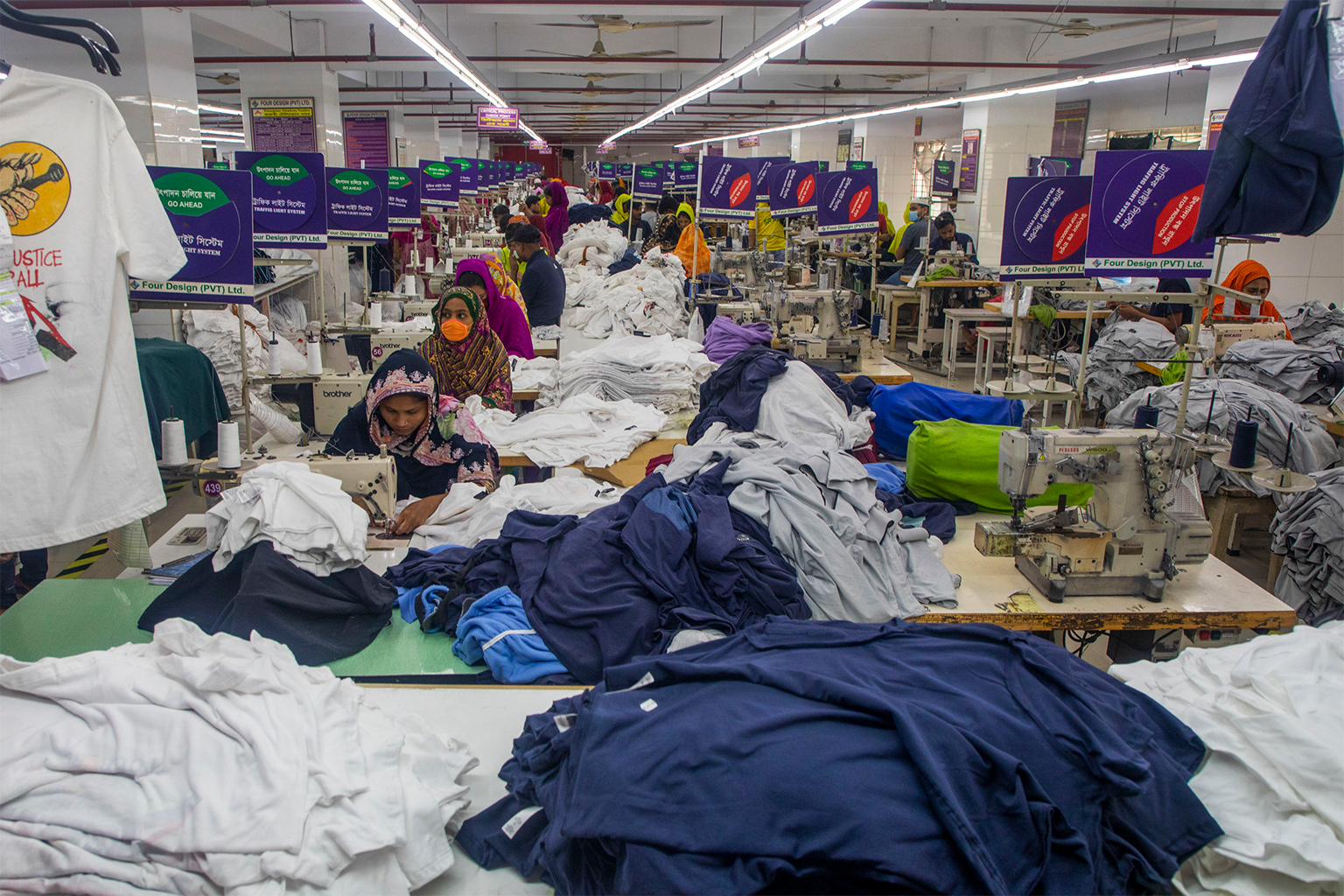- Aligning with the European Union’s target to reduce the use of fresh cotton in the garment sector to reduce the environmental degradation, Bangladesh is increasing the use of recycled materials in its ready-made garment sector.
- The sector accounts for the country’s major share of export earnings, with a value of more than $27.9 billion in exports in the 2019-20 financial year.
- The country currently relies heavily on imported textile fiber; in 2019, almost half of RMG waste was pure cotton.
- Interestingly, many local companies are running recycling plants to meet the gradually increasing demand for recycled cotton fiber.
Bangladesh is the world’s second-largest exporter of ready-to-wear (RMG) clothing, with a significant capacity for manufacturing, high quality and expansion. More than 83% of Bangladesh’s overall exports, worth more than $33 billion in 2019, constitute this sector, which also accounts for 6% of all garment exports worldwide.
The industry is reliant on imported raw resources, especially cotton fiber. In the 2019–20 fiscal year, raw cotton imports were 17.85 million tons, compared with 96,077 tons and 53,289 tons, respectively, of polyester and viscose staple fiber.
Aligning with the European Union’s target to implement Sustainable Development Goal 12, which refers to responsible consumption and production by reducing carbon emissions through using recycled cotton, the Bangladesh Garments Manufacturers and Exporters Association has recently signed an agreement with the country’s single largest RMG buyer H&M to reduce carbon emissions 30% by 2030 using recycled materials.
Regarding meeting the target, Syed Naved Husain, group director and CEO of the textiles and apparel division of the Bangladesh Export Import Company (BEXIMCO), said Bangladesh needs to meet the target as a prerequisite for keeping buyers as well as the market.

Terming the target as possible, he also said that the focus in recent decades has switched to sustainable production challenges, particularly water and energy. The government of Bangladesh, development partners, donor organizations and the business sector all take various actions in this direction. The ambitions have been made possible largely thanks to the prompt response of business insiders in Bangladesh.
Citing an example, the RMG sector leader said that six of the top 10 greenest factories in the world as of 2020 are found in Bangladesh, which also has 500 buildings pursuing U.S. Green Building Council certification and 125 LEED-certified factories.
In Bangladesh, around 4.2 million people work in the garment industry, and about 5 million work in the textile industry, which is considered a backward-linking industry.
Profitability greatly depends on how little material is lost because the cost of the materials accounts for the cost of producing clothes. However, there is currently a lack of information and knowledge regarding the materials waste produced across Bangladesh’s textile and apparel industry production chain.
According to a Center for Policy Dialogue in Bangladesh, even if the 4,500 active garment units in the nation increase their efficiency and ensure the best possible use of textiles, the volume of waste will inevitably be reduced during the production cycle, including the creation of garments items, sewing and dying them.


State of recycling in Bangladesh
Bangladesh has many possibilities to recycle the leftover pre-consumer cotton produced by various RMG enterprises. As a result, numerous millers in Bangladesh seized the chance. BEXIMCO Ltd., CYCLO Recycled Fibers and Recycle-Raw are some of them.
“We are fully operational in the recycled yarn sector by assuring the upcycling of fabric mill waste cut clips. BEXIMCO has made sure that intervention is made and scaled up to enable the achievement of a circular economy target in Bangladesh,” said Mohidus Samad Khan, chief sustainability officer, BEXIMCO Ltd.
Although both the recycling of fabric and the use of locally recycled fabrics is still low, the ratio is rising gradually, which shows the trend toward meeting the EU target, he also said, adding that, however, it requires much collaboration among stakeholders, including consumers, as the price of the recycled products is comparatively a bit higher than the regular ones.
A limited amount of jhoot (waste fabric) is utilized again in Bangladesh to create inexpensive clothing for local markets. Additionally, it is utilized as a filler in mattresses, automobile seats and furniture, though its usefulness in these applications is quite modest.

The role of recycled materials in saving the environment
Only a quarter of the 5.8 million tons of textiles that EU consumers trash each year is recycled, while the remaining 4.3 million tons are dumped into the environment and cause pollution, according to Friends of the Earth Europe.
Some 10,000 liters of water are needed to produce 1 kilogram of cotton, and approximately 250 billion tons of cotton are produced worldwide each year. To cultivate cotton, 43 million tons of pesticide-filled dust are released into the atmosphere each year.
According to Mustafain Munir, founder of CYCLO Recycled Fibers, saving the land and environment is the main priority for sustainability, and everyone who wears and purchases clothing made of recycled yarn, including retailers and producers, is responsible.
Recycled goods are a sustainable way to reduce pollution from clothing production because they use little to no water, chemicals or color, he added.
Banner image: In Bangladesh, around 4.2 million people work in the garment industry. Image by Muhammad Mostafigur Rahman.
Bangladeshi industries explore renewables as power crisis looms
Citations:
Akter, M. M. K., Haq, U. N., Islam, M. M. & Uddin, M. A. (2022). Textile-apparel manufacturing and material waste management in the circular economy: A conceptual model to achieve sustainable development goal (SDG) 12 for Bangladesh. Cleaner Environmental Systems Volume 4, March 2022, 100070. https://doi.org/10.1016/j.cesys.2022.100070
Alam, M. N. (2023). Recycling of pre consumers garment Waste: importance, opportunities, and Challenges for Bangladesh. Textile Focus. Retrieved from https://textilefocus.com/recycling-of-pre-consumers-garment-waste-importance-opportunities-and-challenges-for-bangladesh-2/
